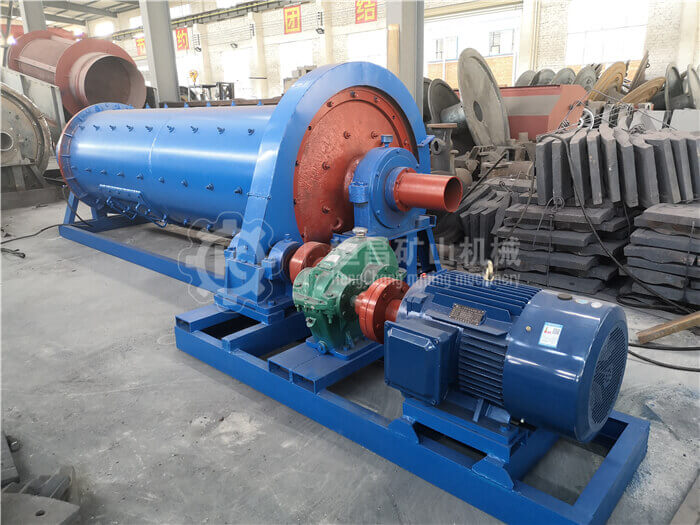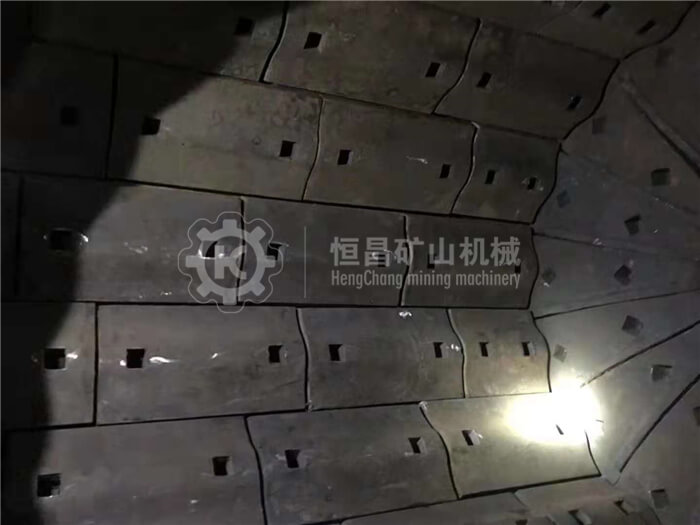Top 10 tips to improve the grinding efficiency of ball mill
2020-03-21 15:19:19

Ball mill’s low grinding efficiency, low processing capacity, high production energy consumption, unstable product fineness, etc. are problems that many customers will encounter. How to effectively improve the grinding efficiency of the ball mill is an important issue. Now, let’s share 10 ways to improve the grinding efficiency of the ball mill!
1. Change the grind ability of raw ore
The hardness, toughness, dissociation and structural defects of the original ore determine the difficulty of grinding. The smaller the grinding degree, the easier the ore is to grind, the less the wear of the mill lining and the steel ball, and the lower the energy consumption; on the contrary, the wear of the mill lining and the steel ball is greater. The nature of the raw ore directly affects the productivity of the mill.
In production, if you encounter relatively difficult-to-grind ore or fine grinding, you can consider adopting a new processing technology to change the grind ability of the ore if economic and site conditions permit: One method is to grind In the process, certain chemicals are added to improve the grinding effect and increase the grinding efficiency. Another method is to change the grind ability of the ore. For example, heating the minerals in the ore to change the mechanical properties of the ore Reduce hardness, etc.

2. More crushing and less grinding, reducing the particle size
The larger the grinding size, the more work the mill needs to do to the ore. To achieve the required grinding fineness, the workload of the ball mill will inevitably increase, and the energy and power consumption will increase.
To reduce the feed size of grinding ore, it is required that the size of the crushed ore product is small, which is, “more broken and less ground”. In addition, the efficiency of crushing ore is significantly higher than the efficiency of grinding, and the energy consumption of crushing ore is low, about 12% to 25% of the energy consumption of grinding.
3. Reasonable filling rate
Under the condition that the ball mill speed is constant, the filling rate is large, the steel ball hits the material many times, the grinding area is large, the grinding effect is strong, but the power consumption is also large, and the filling rate is too high, it is easy to make the ball move Changes are made to reduce the impact on large particles. On the contrary, the filling rate is too small, and the grinding effect is weak.
At present, many mines set the filling rate to 45% ~ 50%, which is not necessarily reasonable in strict terms, because the actual conditions of each plant are different. Copying the data of others to load balls cannot achieve the ideal grinding effect. It depends.
4. Reasonable steel ball size and ratio
Because the steel ball in the ball mill is in point contact with the ore, if the ball diameter is too large, the crushing force will also be large, which will cause the ore to break along the penetrating force direction, instead of breaking along the interface of different mineral crystals with weak binding force.
In addition, in the case of the same filling rate of the steel balls, too large a ball diameter results in too few steel balls, a low probability of crushing, an excessive crushing phenomenon, and uneven product particle size. The steel ball is too small, the crushing force on the ore is small, and the grinding efficiency is low. Therefore, the impact of the precise steel ball size and ratio on the grinding efficiency is very important.
5. Refining the ball
In production, the grinding of steel balls and ore will cause the wear of the steel balls, resulting in changes in the proportion of steel balls of various sizes, affecting the grinding process and causing changes in the fineness of the grinding products. Therefore, reasonable steel ball compensation is required. Only by increasing the system can production be stabilized.
6. Proper grinding concentration
The grinding concentration affects the specific gravity of the pulp, the degree of adhesion of the ore particles around the steel ball, and the fluidity of the pulp. The grinding concentration is low, the slurry flows quickly, and the degree of adhesion of the material around the steel ball is low, which makes the impact of the steel ball on the material weak and the grinding effect is unqualified, and the grinding efficiency is not exerted; the grinding concentration is high, The degree of adhesion of the material around the steel ball is good, and the impact and grinding effect of the steel ball on the material are good, but the slow flow of the ore slurry can easily cause the material to be crushed, which is not conducive to improving the throughput of the mill.
In production practice, the concentration of grinding is often controlled by controlling the feed amount of the mill, or the amount of water supplied by the mill, or adjusting the classification effect, and controlling the particle size composition and moisture in the classified return sand.
7. Optimize the grinding process
In actual production, the grinding process can be optimized based on the ore properties of the original ore, such as the embedded grain size of useful minerals, the degree of monomer dissociation, and the embedded grain size of gangue minerals. Such as pre-throwing, pre-enrichment, stage grinding, and classification in advance to optimize the grinding system, on the one hand, reducing the amount of grinding, on the other hand, early recovery of useful minerals.
8. Improve classification efficiency
The effect of classification efficiency on grinding efficiency is self-evident. High classification efficiency means that qualified grades can be discharged in a timely and efficient manner, while low classification efficiency means that most of the qualified grade products are not discharged and returned to the mill for regrind, which is likely to cause overgrinding, which will affect the subsequent selection effect. .
Using two-stage classification or improving the classification equipment can improve the classification efficiency.
9. Properly increase the classification of sand return
The sand return ratio is the ratio of the sand return amount of the ball mill to the raw ore feed amount, and its size directly affects the mill productivity. One way to improve the sand return ratio of the dressing plant is to increase the original ore supply, and the other way is to reduce the shaft height of the spiral classifier.
However, there is a limit to the improvement of the sand return ratio. When it is increased to a certain value, the increase rate of mill productivity is small, and the total ore feed of the mill is close to the maximum processing capacity of the mill, which easily causes stomach up. Therefore, the sand return ratio should not be too large.
10. Automatic control of grinding system
There are many variable parameters in the grinding operation. One change will inevitably cause successive changes of many factors. If artificial control is used, it will inevitably cause production instability. The automatic control of the grinding operation can keep the grinding classification stable and suitable for the requirements. State can also improve grinding efficiency.
According to foreign reports, the automatic control of the grinding grading circuit can increase production capacity by 2.5% to 10%, and processing one ton of ore can save 0.4 to 1.4kWh / t of power consumption.
During the grinding process, there are many factors that affect the grinding efficiency. Many factors can only be analyzed qualitatively. It is difficult to make quantitative analysis. This requires a comprehensive analysis based on the actual production situation on the site and the results of the qualitative analysis. Derive reasonable parameters in all aspects to guide on-site production to reduce production costs and achieve the goal of energy saving and consumption reduction.